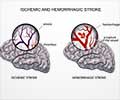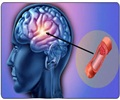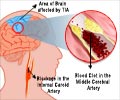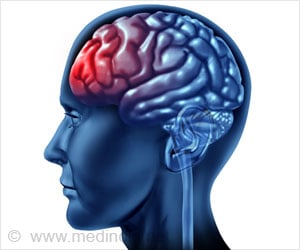Recent studies suggest High Intensity Interval Training (HIIT) may be more effective than moderate exercise in enhancing cardiovascular fitness post-stroke.
- High Intensity Interval Training (HIIT) significantly improves cardiorespiratory fitness in stroke survivors compared to moderate exercise
- The benefits of HIIT are sustained longer than those of moderate exercise post-rehabilitation
- HIIT offers a time-efficient, effective alternative to traditional stroke rehabilitation exercises
Cardiorespiratory Fitness Benefits of High-Intensity Interval Training After Stroke: A Randomized Controlled Trial
Go to source).
High intensity interval training (HIIT) not only improves cardiovascular fitness but also enhances neuroplasticity, the brain's ability to adapt and rewire itself- crucial for stroke recovery! #strokerecovery #hiit #medindia’
Importance of Rehabilitation in Stroke
Each year, approximately 15 million people globally suffer from a stroke, a condition where blood flow to the brain is interrupted, depriving it of oxygen and essential nutrients. This interruption can lead to significant damage, resulting in disabilities that may require speech, occupational, and physical therapy for rehabilitation. The need for effective rehabilitation strategies is crucial, as more than two-thirds of stroke survivors require ongoing care to regain their independence and quality of life.Exercise and Stroke Recovery
Exercise has been proven to be an essential part of stroke rehabilitation, offering numerous benefits, including improved cardiovascular health, reduced risk of stroke recurrence, and enhanced physical and mental well-being. Traditionally, moderate exercise has been recommended for stroke survivors, but recent studies indicate that HIIT might offer even greater benefits.What Is HIIT and How Does It Work?
High-Intensity Interval Training (HIIT) involves short bursts of intense exercise followed by periods of lower-intensity recovery. This type of exercise is known for its efficiency, often delivering results in less time compared to continuous moderate exercise. HIIT can be particularly beneficial for stroke survivors, as it helps to improve aerobic fitness, which is often compromised after a stroke.HIIT vs. Moderate Exercise in Stroke Patients
A recent study published in Stroke examined the effects of HIIT compared to moderate exercise in stroke survivors. The study involved 82 participants who were six months to five years post-stroke. These individuals were randomly assigned to either a HIIT or a moderate exercise group, with both groups exercising three times a week for 12 weeks.The HIIT protocol consisted of 10 one-minute intervals of high-intensity exercise, where participants worked at 80-100% of their capacity, interspersed with one-minute recovery intervals at 30% intensity. In contrast, the moderate exercise group engaged in continuous exercise at 40-80% intensity for 20-30 minutes.
HIIT Outperforms Moderate Exercise in Stroke Survivors
The results of the study were striking. Participants in the HIIT group showed twice the improvement in cardiorespiratory fitness levels (measured by the maximum amount of oxygen a person can take in during exercise) compared to those in the moderate exercise group. This improvement is significant, as higher levels of cardiorespiratory fitness are associated with a reduced risk of hospitalization and recurrent stroke.Sustained Benefits of High Intensity Interval Training
One of the most notable findings was that the benefits of HIIT persisted even after the study concluded. Eight weeks post-study, participants in the HIIT group maintained their improved fitness levels above clinically relevant limits, while the moderate exercise group did not. This suggests that HIIT not only offers immediate benefits but also helps sustain them, potentially leading to better long-term outcomes for stroke survivors.Role of Intensity in Recovery
According to Dr. Ada Tang, PT, Ph.D., the study's lead author and a physiotherapist at McMaster University, the intensity of exercise plays a crucial role in its effectiveness. While many therapists are cautious about pushing stroke patients to higher levels of activity, this study highlights that more rigorous exercise, like HIIT, can be highly beneficial without causing over-fatigue. By alternating between high-intensity bursts and recovery periods, HIIT allows stroke survivors to achieve significant improvements in fitness without overwhelming their bodies.Broader Implications of HIIT for Stroke Recovery
The findings of this study have important implications for stroke rehabilitation. Improving aerobic fitness is critical for reducing the risk of future strokes and enhancing the overall quality of life for survivors. By incorporating HIIT into rehabilitation programs, healthcare providers can offer a more effective and time-efficient method for improving cardiovascular fitness and aiding recovery.Dr. Christopher Yi, a board-certified vascular surgeon, emphasized the significance of these findings. He noted that stroke patients often suffer from profound disabilities and a reduced quality of life. Introducing HIIT as a rehabilitation strategy could improve not only their physical fitness but also their overall well-being, potentially reducing the risk of recurrent strokes and increasing survival rates.
However, some experts, like Ryan Glatt, CPT, NBC-HWC, have raised questions about the generalizability of these findings. While HIIT has shown promise in the study, there is a need for further research involving a more diverse and severely affected stroke population to understand its long-term impact and effectiveness.
New Path in Stroke Rehabilitation
High-Intensity Interval Training (HIIT) represents a promising advancement in stroke rehabilitation. With its ability to significantly improve cardiorespiratory fitness in a short amount of time, HIIT offers a feasible and effective alternative to traditional moderate exercise. For stroke survivors, incorporating HIIT into their recovery regimen could mean faster, more sustainable improvements in fitness and a better quality of life. As research continues, HIIT may become a key component of rehabilitation programs, helping to reduce the global burden of stroke and improve outcomes for millions of survivors worldwide.Reference:
- Cardiorespiratory Fitness Benefits of High-Intensity Interval Training After Stroke: A Randomized Controlled Trial - (https://www.ahajournals.org/doi/10.1161/STROKEAHA.124.046564)
Source-Medindia
















